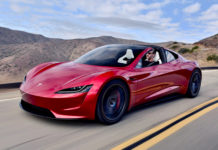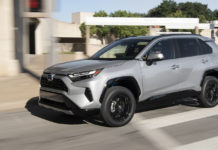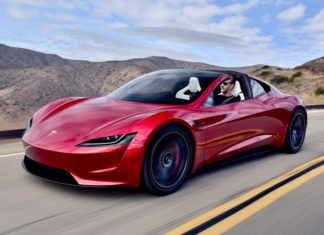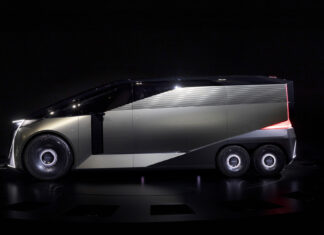Photos: Detroit Auto Dealers Association
While the focus of the Detroit Auto Show’s move has been on automakers and media, the transition could create a new experience for consumers.
For over a century, traditional auto shows have given automakers opportunities to show potential customers where they’re heading. After the initial flurries of rumors and camouflaged prototypes, the public at-large finally gets to see the new models in the flesh. However, auto shows have waned in popularity in recent years. Automakers have really emphasized that point by pulling out of major auto shows in the upcoming 2019 calendar. Mercedes-Benz, Audi, BMW, Porsche, Jaguar, Land Rover and Volvo have all pulled out of Detroit, for instance.
If automakers continue to skip the shows, that means consumers won’t attend either. Lower attendance would then lead to less incentive for the remaining manufacturers to show up either. Then they pull out as well, and so on. To keep the show relevant in the public sphere, as well as in the industry, the Detroit Auto Dealers Association (DADA) announced the move to June, rather than January, in 2020. Specifically, the 2020 show will take place the week of June 8th. For reference, the 2019 show will stay on schedule, from January 14 – 27, 2019.
Opportunities for automakers to “activate and engage”
One of the primary reasons for moving the show, according to DADA, is the opportunity for automakers to engage consumers. “Traditional auto shows have largely been a static experience,” says Max Muncey, DADA Public Relations Manager. “People get to sit in the new cars, but for the most part they’re static.” By scheduling the show in June, automakers have “limitless opportunities to activate” and engage in what has been, to date, a stationary experience.
Of course, the aim of “engaging” with consumers is a return on their investments. The whole point of having auto shows is to sell cars. But in today’s world, where you can read reviews online and watch them on YouTube, just sitting in the car isn’t enough. It’s not terribly informative, so the DADA decided it was time to change up the formula. In the end, the goal is still the same, as Muncey quoted an auto industry executive: “to get butts in the seats.” However, a change in the time frame opens the door to outdoor venues. That way, there’s more ride and drives and other opportunities for automakers to show rather than just explain why their cars are so great. So if you want to actually drive some of the cars to get a better impression of what they’re like, this move makes sense.
Busy summer calendar
Moving Detroit to June also moves the show right smack in the middle of one of the city’s busiest times of the year. The 2020 show will take place right after the Detroit Grand Prix IndyCar race, and before the Ford fireworks show on the Fourth of July. In that slot, the Detroit Auto Show will contribute to a “month-long celebration of Detroit’s heritage”. As tourism naturally increases during the summer, local businesses also relish the opportunity to serve customers coming in for the auto show.
There could be some down sides
The DADA is keen to point out that this is one of the largest changes to the North American International Auto Show – as it’s officially known – in thirty years. And they’re likely right, but moving the show to June could also have some unfavorable consequences.
The show pumps hundreds of millions of dollars into Detroit’s economy – money that’s particularly needed during slower winter months. 2018’s show still attracted 809,000 attendees, according to the DADA – not an insignificant figure. It filled hotels, restaurants, and kept locals employed during the post-holiday lull where we’re not spending or traveling. Moving the show could lead to a boom-and-bust cycle for some local businesses. Detroit’s Cobo Center also has a large gap to fill, but organizers at the venue have mentioned they’re actively seeking conventions to fill the space.
Risky, but worth it?
For automakers, this decision could provide more incentive to actually show up at future shows. More active exhibits, particularly outdoors, could give all of us a chance to actually test new cars ourselves. Consumers can also benefit from a more vibrant – and let’s face it, warmer – atmosphere to experience the show.
Organizers aim to make the Detroit Auto Show – still host to some of the largest reveals on the auto show calendar – more relevant. With a June kicking off point, the 2020 show will be months before the rest of the season. The U.S. auto show season typically starts with Los Angeles in November. However, moving the show out and away from the rest of the pack could create an issue for automakers. Can they actually get debuts ready in time for the June show, when they’ve typically had until near the end of the year before?
In short, it could be a fateful decision. However, so could have been a decision to not move the show from its current January time frame. With space for outdoor exhibits, the Detroit Auto Show could be a lot more fun for ordinary, car-buying people. We’ll have to see how the approach pans out in 2020.
Stay tuned to TFLcar.com for more updates! Subscribe to The Fast Lane Car and TFLnow for more news, views and real-world reviews.


























